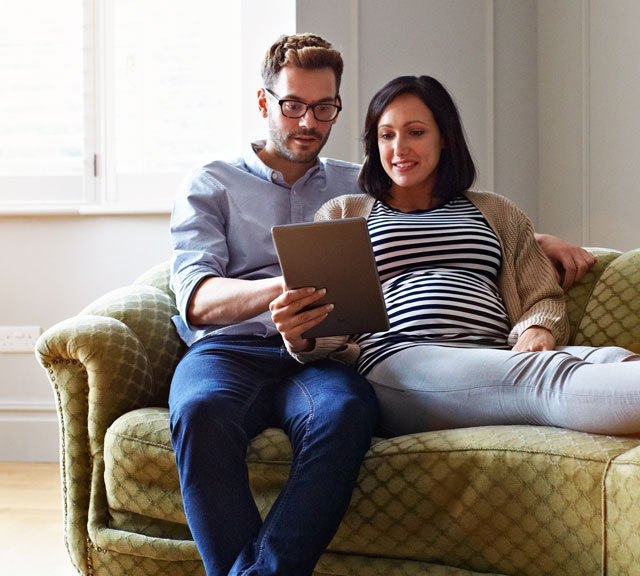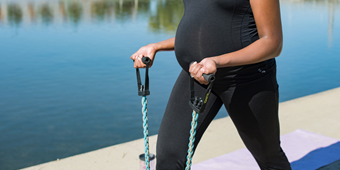Counting Your Baby’s Kicks

Find Your Perfect Match
Answer a few questions and we'll provide you with a list of primary care providers that best fit your needs.
You’ve been waiting for it. Somewhere between 18 and 25 weeks of pregnancy, you’ll feel the first fluttering movements of your little one. At first you’ll wonder, “Could that really be my baby?” Soon, you’ll have no doubts.
You’ll have a nearly constant awareness of your baby’s presence as he moves within you. And health care professionals recommend that you start counting your baby’s kicks at about 28 weeks of pregnancy.
Recording the amount of time it takes your baby to move 10 times gives you a baseline to know what is normal for your baby.
Why Should You Count Kicks?

Recording the amount of time it takes your baby to move 10 times gives you a baseline to know what is normal for your baby. You can learn your baby’s patterns by counting her various movements (kicks, jabs, stretches, etc.) at about the same time every day.
If you know what is normal for your baby, you’ll also learn what is not normal. In the third trimester, a decrease in movement can be the earliest sign that your baby is in distress. Contacting your health care provider as soon as you notice a change may mean all the difference in preventing stillbirth.
Stillbirth is still a concern for modern pregnancies. About 24,000 stillbirths are reported each year in the U.S. – one in every 164 pregnancies. For African American women, the numbers are grimmer – one in 94.
But counting kicks really does help. Five years after the start of a campaign in Iowa to teach women to count their babies’ kicks, the stillbirth rate had dropped by 26 percent.
And counting kicks gives you a chance to connect with your baby, whom before you know it, you’ll be chasing after in a park.
Who Should Be Counting Kicks?
Women who have high risk pregnancies definitely need to count kicks. But all women who are in their third trimester (after 28 weeks) may benefit. If you struggle with anxiety about your baby’s health, this is a simple way to do something besides worry.
How Should You Count Kicks?
Set apart the same general time every day to sit down or lay down and feel your baby’s movements. You’ll probably start having a sense of when your baby is most active. This will generally be in the evening, due to blood sugar levels. Find a comfortable position (perhaps lying on your left side) and count all your baby’s movements until you get to 10. (But don’t count hiccoughs, because, like all people, your baby has no control of this movement.) This will generally take less than a half hour.
Then write down the amount of time it takes to get to 10 movements each day. Bring your kick count record to appointments with your health care provider. An easy way to do this is with the Count the Kicks! smartphone app (available on iTunes![]() or Google Play
or Google Play![]() ).
).
What Should You Do If You Notice a Change?
If you notice a change in your baby’s daily movements, call your health care provider right away. Push aside any worry that you may be bothering your doctor. Your doctor will want you to call and make an appointment to be checked as soon as possible.
Find Your Perfect Match
Answer a few questions and we'll provide you with a list of primary care providers that best fit your needs.
Source: CounttheKicks.org; American Pregnancy Association; University of Washington Health




